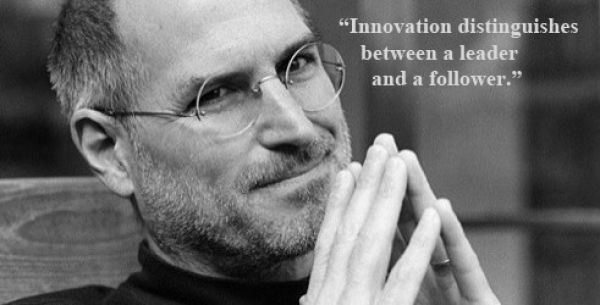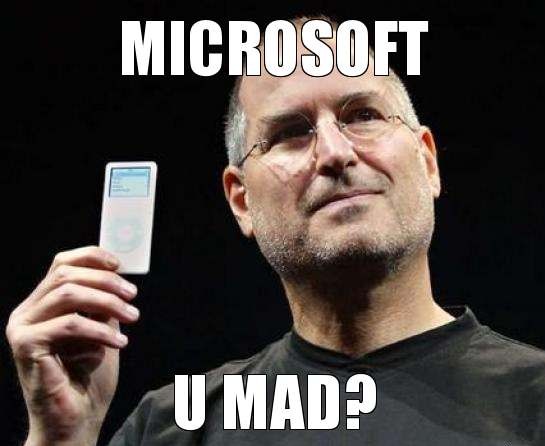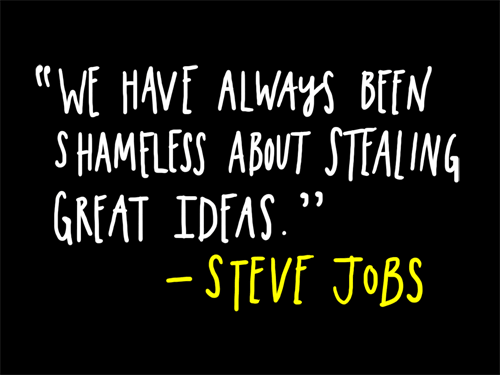March 23, 2019
3 Tips for Overcoming Fear -KIM Kiyosaki
March 18, 2019
YOUR DECISION, MY DECISION, OUR DECISION -love & relationship
3 PRINCIPLES FOR DECISION-MAKING IN RELATIONSHIPS
When you’re in a committed relationship, on the other hand, decisions require buy-in from both parties, and nearly every decision you make has an impact on your partner.

Anyone who has ever tried to make a decision – small or big – with their partner knows how difficult it is. Why is it so hard? When you are single, your decisions are your own; they only require personal buy-in and typically they have very little impact on other people. (Or at least that’s what you tell yourself!)
DECISIONS: SINGLE VS. COUPLE

Once two people enter into a relationship, the number of decisions they should make on their own decreases significantly because their respective decision circles overlap. This is not necessarily because all of these decisions must be made together, but rather because nearly every decision you make individually in a relationship has an impact on the other person. In order to maintain a healthy relationship, each partner must at least consider their spouse when making decisions. Whether you are actively making decisions together or considering one another in your individual decisions, there are relatively few that you should make completely on your own.
However, the degree to which your two decision circles overlap is entirely up to you and your partner, and it is different for every couple. Still, the more decisions a couple can successfully share and/or confidently defer to the others judgement on, the better. If one or both partners are making excessive unilateral decisions, then, sooner or later, the relationship will suffer.
ONE COUPLE’S STRUGGLE WITH DECISION-MAKING
A while ago, I worked with a couple at one of our marriage retreats. It became clear to me early on that they struggled with joint decision-making. When I showed the wife the way decision-making as a couple was so intertwined, she winced. Pointing to the model in which the two circles are separate, she said, “That is my ideal relationship.” Her ideal, though, is not compatible with a committed relationship. So, despite her strong desire to improve the relationship with her husband, she could not let go of her desire for complete freedom, and, ultimately, she chose to end the marriage.
HOW DECISION-MAKING BUILDS CONNECTION AND TRUST
It doesn’t always end this way. I’ve also worked with couples who had been making excessive unilateral decisions but were able to correct their course and save their marriage. One couple, for instance, had been living separately at the time that they came to our retreat. They were hardly considering one another from day to day and only included one another in decision-making when one of them happened to be visiting the other, which wasn’t often. After the retreat, they decided to move back in together. They coordinated their schedules, committed to regular date nights, and checked in with each other multiple times a day. What seemed like a gamble to them at the outset truly paid off and brought their relationship to a higher level.
Both of these examples show us how pivotal decision-making in relationships is for the overall health of the partnership. Each decision you as a couple can successfully make together brings you closer to each other – deepens the connection and increases the level of trust that you are looking out for each other, putting each other’s needs equal to (if not above) your own. When you begin to operate as if your partner’s needs are your own and take full responsibility for their feelings, then you have achieved what Tony refers to as a three-dimensional relationship. This is the most evolved and sustainable level of a relationship, and is where we should strive to be.
THREE PRINCIPLES FOR JOINT DECISION-MAKING
Now you’re ready to make all these decisions as a couple, right? Not so fast. To effectively take action, there are three principles that you must live by as you go through the process:
- Communication. Understand one another’s perspective. How do they see things? Let them tell you what they see and what they believe to be true. Make sure they understand that their input is valuable and contributes significantly to the outcome, the final decision.
- Respect. When your partner makes his or her own decisions, you must openly and wholeheartedly respect their judgement and allow them the freedom to succeed or fail on their own.
- Trustworthiness. When making your own decisions, you must consistently show your partner that you can make good decisions on your own. As Tony often says, It’s not what we do once in a while that shapes our lives, but what we do consistently that makes a lasting change.
As long as you both communicate with each other, respect one another, and individually make trustworthy decisions, your relationship will grow stronger and flourish.
These principles proved to be both powerful and transformative for one couple, Brian and Samantha, who began our retreat with their relationship at all-time low. A significant breach of trust on Brian’s part led to them separating and living in different states. Samantha felt hopeless, and had essentially given up on the relationship.
Despite their progress at the retreat, the most significant transformation occurred afterward. Before heading home, Samantha refused to commit to anything except for a weekly phone call that was dedicated to their join decision-making. As painstakingly difficult as this was for Brian, her reservations were completely understandable.
Instead of giving up, getting angry, or blaming Samantha, Brian implemented the principles he learned at the retreat.
- He respected her boundaries and desire for freedom and autonomy.
- He committed to a higher level of communication with her on each of their weekly phone calls.
- He made smart decisions that were worthy of Samantha’s trust.
These principles in practice made Samantha feel safe – something she hadn’t felt in some time. Beginning with small commitments, like weekends away and occasional visits, their relationship began to grow. Brian eventually moved back to their home state, and they started their lives anew with the purchase of a brand new home. Years later, Samantha’s trust in Brian had been completely restored.
Decision-making in relationships is a great litmus test for the health of your relationship, and, as demonstrated with Brian and Samantha, can make or a break a couple. Ultimately, the personal decisions we make define who we are. They are the difference between success and failure. It stands to reason that decision-making is equally important in defining who we are within our relationships, and even lead to our relationship successes and failures. We are all bound to experience trying times with our partner – and when that happens, remember this simple mantra: “I respect your decisions, I am trustworthy with my decisions, and I communicate through our decisions.” When the foundation of a relationship is built upon the pillars of communication, respect, and trust, then it is bound to succeed.
TONY ROBBIN
Every Team Needs a "Code of Honor"
In the absence of rules, people make up their own. Develop an ethical list of rules to ensure success.
The idea that successful businesses need successful teams behind them is nothing new. Entrepreneurs know that to get to the top, they need to have good people with them. Business is not a solo sport.
But what makes a great team? Culture, personalities and traits are all important, but if you’re looking for a championship-level team, then you need to create a system that holds people accountable for their actions and for each other.
t’s the same truth in sports. Sure, you’ll have your star players, but even they can’t succeed unless everyone is on board, playing by the same game plan, motivating one another, referencing the same code of ethics. Even some of the most famous quotes from the late and great Vince Lombardi are about teamwork.
A list of said rules is what I call the "Code of Honor." It’s something I’ve seen in over two decades of corporate training that successful businesses will have in common. It is a set of simple, powerful rules that govern the internal behavior of any team, organization, family and even nation. These rules determine how we behave towards one another. They are what people are willing to stand and defend, and be accountable for. They are what will keep the team moving when the pressure is on.
These rules don’t need to be complicated, but they need to be valuable. Some examples of what I always have in my list are:
- Always be on time.
- If you are unsure how to answer a client’s question, ask someone who will know.
- Commit to personal development and education.
The list goes on, and they can be as customized to your own set of morals, too, just as long as it makes sense for your team.
As I always say, “In the absence of rules, people create their own.” To ensure that your team functions to the best of its ability, here’s how you can start to develop your own Code of Honor:
1. Find a sane moment in which to create the code.
Business is hectic, and sometimes your emotions aren’t always stable. When emotions are high, intelligence is low. Wait until you have a quiet moment to yourself so that you can think clearly and rationally.
2. Find recurring issues that interfere with the team’s performance.
Is there someone on your team who’s quick to publicly call someone else out? Is tardiness a common problem in the office? Are people simply not communicating with each other on a daily basis? If there’s something that can be better, establish the solution as a code. Everyone should participate.
It’s easy to want to create the list yourself, post it up for all to see, and leave it be. Truth is, for a team to work successfully, the leader must be transparent and open to constructive criticism. Maybe some rules are too egregious for the team. Rules like “Every email sent must CC me” are just not going to fly in your team’s Code of Honor. Plus, when a team feels like they’ve had a hand in shaping the code, the more likely they are to want to uphold it.
3. Be specific.
The Code of Honor is not a mission statement. It’s more direct than that. Instead of crafting rules like “Be professional,” tell your team exactly what you think your definition of that means. Something like, “Do not discuss issues while angry. Calm your emotions before a conversation.” Or, “Never speak ill of a teammate behind their backs. Confront each other on your issues.”
Rules should be challenging but not unrealistic.
It’s easy to go overboard creating your code. You’ll likely want to have hundreds of rules, but that can be overwhelming for your team and might actually hurt your cause rather than help it. Just like the Ten Commandments, start with a short and simple list that everyone can understand and want to strive for.
4. Hold each other accountable to the code.
If someone breaches the Code of Honor, bring it to their attention. If the rules aren’t enforced, then the rules just become another dust-collecting motivational poster in the office. And encourage your team to call you out if you breach it as well. Respect is a two-way street, after all.
Remember that a Code of Honor is an ever-evolving thing that changes based on the team, the current issues and immediate needs. The code is also a great way to screen new candidates applying for a position in your company. If he or she cannot abide by the rules of your company, then it may mean you haven’t found the right person yet.
If you’re interested in seeing just how functional (or dysfunctional) your team is, you can take this free online assessment. Every team has room for improvement, and this tool will help you figure out the areas where you may want to focus your efforts on.
Blair Singer & Amit Tiwari
March 04, 2019
Steve Jobs Marketing Lessons: 10 timeless lessons he’s taught us and his most famous marketing quotes
“Here’s to the crazy ones, the misfits, the rebels, the troublemakers, the round pegs in the square holes… the ones who see things differently — they’re not fond of rules… You can quote them, disagree with them, glorify or vilify them, but the only thing you can’t do is ignore them because they change things… they push the human race forward, and while some may see them as the crazy ones, we see genius, because the ones who are crazy enough to think that they can change the world, are the ones who do.”- one of the most heard Steve Jobs famous quotes, Think Different (1997)
Steve Jobs not only represents a brand but actually a generation of users who follow in the footsteps of his creativity. The impact that Jobs has had on everyone’s lives can never be overestimated. Although you’re not always aware of it, his innovations have affected everything around you, from movies to computers, music, and mobile phones.
A lot of people still keep asking: “Why is Apple such a successful brand?” In order to answer this question, we should remember some of Steve Jobs quotes, when he was just a young visionary:
“Marketing is about values. It’s a complicated and noisy world, and we’re not going to get a chance to get people to remember much about us. No company is. So we have to be really clear about what we want them to know about us.”
And boy, was he right about what we remember! Not only were his products iconic, but they’re also his legacy. The key to Jobs’ success is a combination of quality, innovation, and market strategies that were designed extremely carefully. They were so effective that Apple managed to reinvent products that were already available on the market, and got consumers to think they had never seen anything like them before.
Steve Jobs not only reinvented Apple, but he redesigned and marketed thousands of products that were actually already on the market (e.g. mp3 players). Steve was so brilliant, that even when he was fired from his post as CEO of Apple, it didn’t stop him from returning to his post the second time, and this time increasing their sales.
Steve Jobs Marketing Lesson #1: Make a Great Product
Since 1981, we’ve observed success, strategy, inspiration, and innovation. Very few entrepreneurs have managed to accomplish what Steve Jobs did: create an excellent product. From its performance, to the physical space each one occupies, the design, and the beautiful box it comes carefully wrapped in- when you buy an Apple product you know what to expect. For Jobs: (and thousands on his team, of course! After all, Rome wasn’t built in a day, or alone!) product quality comes first and not just a great packaging and excellent marketing strategies. The key is that the product is excellent. In his own words:
“It’s not about pop culture, and it’s not about fooling people, and it’s not about convincing people that they want something they don’t. We figure out what we want. And I think we’re pretty good at having the right discipline to think through whether a lot of other people are going to want it, too. That’s what we get paid to do. So you can’t go out and ask people, you know, what the next big [thing.] There’s a great quote by Henry Ford, right? He said, ‘If I’d have asked my customers what they wanted, they would have told me ‘A faster horse’.” Steve Jobs Quote
Steve Jobs Marketing Lesson #2: Don’t Sell Products, Sell Dreams.
Apple’s strategy involves selling their consumers a global package of dreams, personal experiences, and status, and it makes almost all other products go unnoticed if they don’t carry the Apple logo.
As we said before, Apple managed to reinvent products that were already on the market. You know when you buy an Apple product, you’re not only buying a great piece of modern technology, you’re buying a little piece of ideology to put in your pocket. By carrying it, you adopt the visions that Steve Jobs had: dreams can be fulfilled, take a position in life and stand up for it, don’t squander your life living by someone else’s rules.
By carrying it, you adopt the visions that Steve Jobs had: dreams can be fulfilled, take a position in life and stand up for it, don’t squander your life living by someone else’s rules. Be true to yourself.
Apple is different from all other brands because, for Steve Jobs, consumers weren’t just consumers, they were people. People with dreams, hopes, and ambitions and he got Apple to create products to help them achieve their dreams and goals.
Apple has always been innovative, from their products to how they market their message. An example is when they launched their famous Apple commercial “1984” (which we can see below). It demonstrated why 1984 wasn’t like”1984″ after it came out. It was like some sort of marketing-event, where the campaign itself was so revolutionary that the media even covered it like an event.
Steve Jobs Marketing Lesson #3: Focus on the Experience
Think different. Think like Nike and Apple.
Focus on creating a universe of sensations, experiences, and values that the person gets when they buy your product. Analyze how it feels to use and buy your products, and think about what you need to improve, and what you need to focus on. When you purchase your Apple MacBook Air, you’re not only buying a computer where you can do your work,
When you purchase your Apple MacBook Air, you’re not only buying a computer where you can do your work, edit pics, videos, and connect with your friends. You’re buyingApple’s belief that people with passion can change the world and make it a better place.
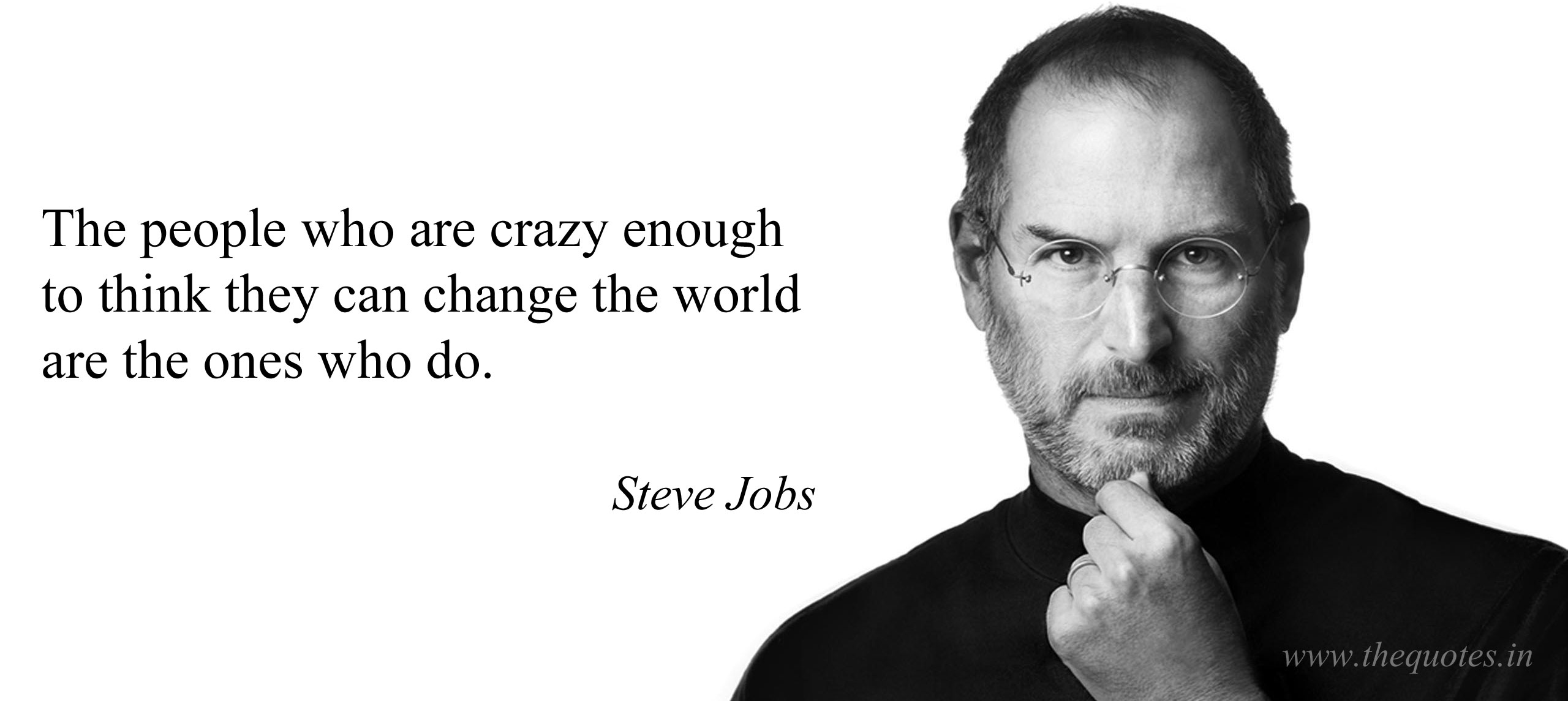
In Nike’s case, they do sell a commodity, but when you think Nike, you think about the whole experience. When we say Nike, it doesn’t feel like we’re talking about a fleet of factories with the best-calibrated machines or a company that just sells shoes, it feels like we’re talking about a lifestyle. Nike represents passion, crossing your limits, training, enduring and accomplishing your goals. Nike doesn’t even mention selling shoes in their ads, and that’s the key to their success.
Steve Jobs Marketing Lesson #4: Turn Consumers Into Evangelists, Not Just Customers.
One of Apple’s most important strategies is getting the consumer to want to recommend the brand, and without being paid for it. Like other iconic brands such as Harley Davidson, (the great motorcycle company that doesn’t just sell bikes, but rather a subculture, and a lifestyle); Apple users are advocates, sponsors, and fans of the brand. We’ve seen it in the classic fight between designers: which is better for designing computer graphics, Mac or PC?
Like other iconic brands such as Harley Davidson, (the great motorcycle company that doesn’t just sell bikes, but rather a subculture, and a lifestyle); Apple users are advocates, sponsors, and fans of the brand. We’ve seen it in the classic fight between designers: which is better for designing computer graphics, Mac or PC?
We’ve seen it in the classic fight between designers: which is better for designing computer graphics, Mac or PC? iPhone users preach that it’s the only option for cellphones all the time, right? Apple users are like evangelists who represent a way of thinking, a new generation, and a mission, something bigger than themselves. They’re part of the team and understand the vision of the company. Sidenote, while Apple managed to get their customers to be really loyal in the most profitable way, that is, by turning them into fans.
Harley Davidson meanwhile, actually got them to take it even further: the consumers choose to tattoo themselves with the brand’s logo as a symbol of membership and belonging. Now we’re talking about brand power!
Steve Jobs Marketing Lesson #5: Master the Message, (and now that we’re on the subject, the delivery too).
You can have a great product but if communication fails, it’s like watching a stand-up comedian do a gig in a completely different language.
Jobs gave us some of the best speeches in corporate history. He preached against PowerPoint presentations, saying you only have to use them when it’s really necessary. Mastering the topic, the message, and knowing how to present it without visual aids, speaks much more than a cute drawing created with some elegant color scheme. For large groups, PowerPoint is excellent but Jobs hated when people brought in presentations into meetings, because he saw it as a sign that they didn’t completely dominate the topic they were presenting.
Steve Jobs Marketing Lesson #6: Decisions Should be Made by a Group, Not a Committee
No wonder there aren’t any monuments of committees. Important decisions should be made by a group designated to decision making. A small group who trusts in each other and in their instincts because they are all immersed in the company’s objectives. You should always encourage the team to discuss ideas, but then only leave those most suitable to make the final decisions.
Steve Jobs Marketing Lesson #7: Find an Enemy
Think about Coca Cola versus Pepsi and all their media battles over time. Make it clear who the enemy is, and try to get people to take a side.
Choosing sides is part of human behavior and was introduced as an idea by the French social psychologists Gabriel Tarde and Gustave Le Bon. The herd mentality or mob mentality is what happens when the collective consciousness occurs in a group of people influenced and pressured by the masses to adopt certain behaviors, follow trends, and/or purchase products. The desire to belong and to explain the disorder of the world makes consumers feel better about belonging to the ideology of a brand that matches their own thoughts and values. If you don’t stand up for what you believe in, you’ll go unnoticed.
The desire to belong and to explain the disorder of the world makes consumers feel better about belonging to the ideology of a brand that matches their own thoughts and values. If you don’t stand up for what you believe in, you’ll go unnoticed. And what better way to state what you believe in, than stating clearly what you DON’T believe in?
Apple is well aware of this, so obviously so are its users, and you know it’s been made clear exactly who the enemy is: Bill Gates and what Microsoft brought to market, as Jobs puts it: bad taste. The biggest enemies of Apple are, complexity, lack of good taste, and conventional thinking
The biggest enemies of Apple are, complexity, lack of good taste, and conventional thinking, all aspects that Jobs made abundantly clear, that Microsoft possesses. Jobs stated: –
“The only problem with Microsoft is they just have no taste. They have absolutely no taste. And I don’t mean that in a small way, I mean that in a big way, in the sense that they don’t think of original ideas, and they don’t bring much culture into their products.” Steve Jobs Quotes
For Jobs, an important part of the development of a product is the aesthetics, and that the homogenous design that represents the brand is a style that you find in absolutely all of their products.
Steve Jobs Marketing Lesson #8: Keep the Design Simple, and When You Get There, “Simply it Even More”.
It’s the essence of the coveted Apple products. No other competing product beats their level of simplicity. From the user experience to its aesthetic design and delicate work put in to make their products intuitive. So, one thing is absolutely clear: less is more.

Steve Jobs Marketing Lesson #9: You don’t Have to be the First, but “You’ve Got to be the Best”.
As we’ve mentioned a few times, Apple didn’t invent MP3 players, Smartphones, Tablets or computers. However, they did redefine and invest all their efforts to create a world where their products gave us a before and after of new technology.
Even though other competition was already on the market, Apple took those same products and improved the user experience, navigability, weight, packaging, and distribution channels. They achieved better design, size, they listened, paid attention, and managed to design products that are super convenient to carry with you everywhere you go.
Steve Jobs Marketing Lesson #10: Innovate or Die
Steve Jobs knew that the key was diving into the user experience and identifying what they need, and what they want. Thinking outside the box, and constantly providing products and services that meet those needs. Apple remains a precursor in the current
Apple remains a precursor in the current market and has recently launched some apps that measure your health and can automate your home with its iOS 8.
The IOS 8 operating system was presented by Tim Cook at conference number 25 for enterprise developers, according to Reuters. The software includes, among others, HomeKit and HealthKit, perfecting the comfortable, simple and practical lifestyle that Apple seeks to provide with their products.
- Healthkit allows users to control their health and provides them with a database where their information is recorded along with their info from other fitness related applications.
- HomeKit, meanwhile, allows the user to control their locks, lights, garage doors, etc.. from the device.
From the Genius Bars to Apple Stores, the vision and personal beliefs of Steve Jobs are alive in the legacy of the coolest products, whose sales efforts reach even the packaging.
Jobs believed that you don’t only have to innovate, but you’ve got to think and dream big, believe in something and then fight for it. And if you want to stand out in a highly competitive market, you need to take risks, but mostly you need to be different or else you’ll just blend in with the rest.
“Think Different”
Source -POSTCRON
David Ogilvy on Advertising: QUOTE
In your personal and professional life, you should only aim for the best of the best, and then, aim a little higher.” And believe me, David Ogilvy, you got there!
Here is a video that resumes very quickly the most famous quotes of the Father of Advertising, enjoy it!
David Ogilvy on Advertising: his 7 commandments and quotes all Marketers must know
Advertising is an ancient art, but don’t even think about calling what David Ogilvy does, “art”.
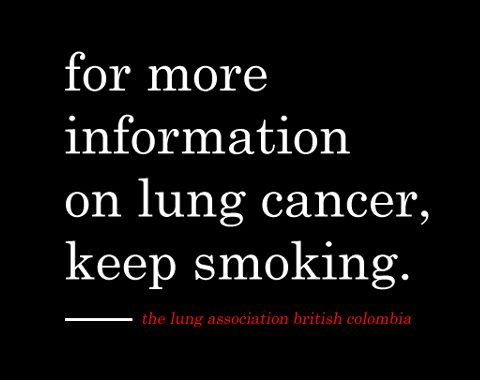
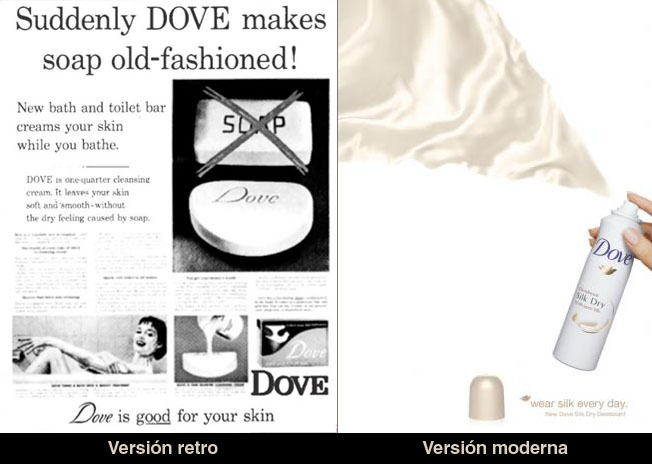

Remember that in order to achieve good positioning for your brand and product, apart from a thorough study of the target audience, it’s essential to have a strong promotional campaign present at all times and spaces where your audience is found. Social networks are an essential medium today which allow us to get closer to our potential customers.

If you want to learn how to define the target audience or “buyer persona” of your business, don’t miss this article!
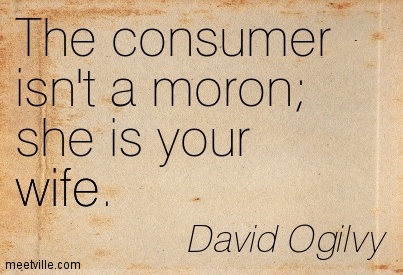
For example, in this “anti-aging” line of products, the message promises something that not even a scalpel could do: “Less Wrinkles in Minutes” (Minutes?!!) If it really worked, I’m pretty sure it would have put an end to the cosmetic surgery world by now. Sometimes I wonder if these people are for real!

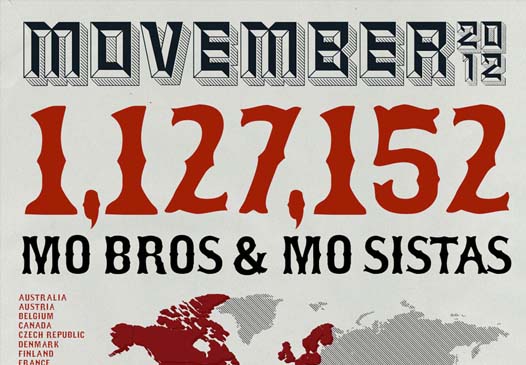
This campaign is good news for charity, but bad news for brands that sell razors.The Movember movement had so much popularity, that it got to the point that Gillette was being affected by its impact. They reported a 16% decrease in sales, according to CFO P & G, Jon Moeller.
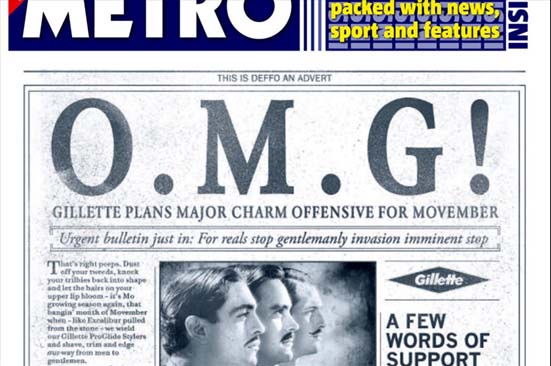
Gillette wrote their ads in a way that combines the Vintage aesthetic style of retro advertising, with the idioms of the current generation, using terms like “omg” (stands for “oh my god”) which is way more likely to be used by someone who’s 17, than from the mouth of your grandma.

So, with your headline and copy, you want people to buy your product, right? What the reader wants to know to be convinced is one last thing: Why? The advertising master says: “The more informative your advertising, the more persuasive it will be.”
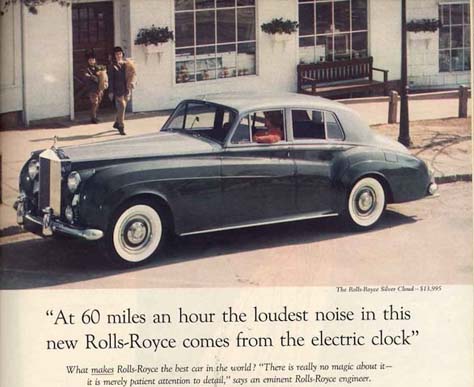
Wanna learn how to write titles that’ll make even Buzzfeed or Upworthy envy you cause no one will be able to resist clicking on them? Then you’ve gotta read this post!

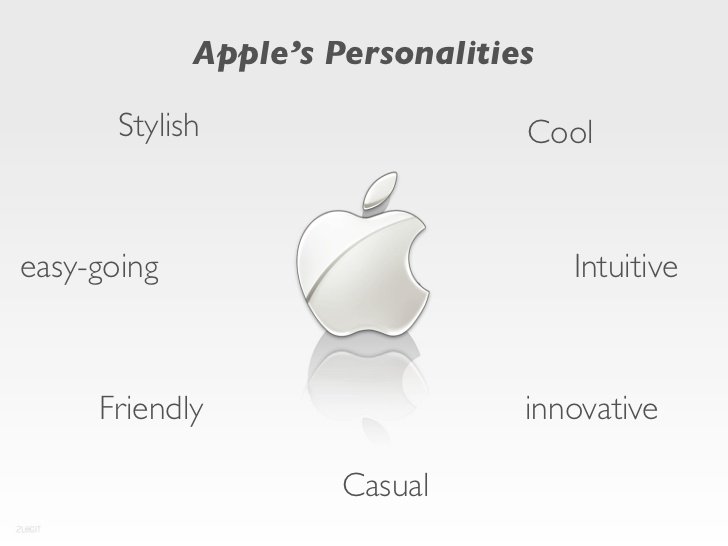
He was born on June 23, 1911 in West Horsley, England. He decided to migrate to the United States, more specifically New York. There he became a copy-write legend, creating hundreds of effective and powerful headlines that to this day retain their power.
David Ogilvy is the most famous publicist and his lessons are still as relevant todayas they were when he opened the doors of his agency Ogilvy & Mather in 1948. He understood the nature of the role of marketing and advertising to the point of being able to conclude with that quote:
advertising is not an art form, it’s a medium for information, a message for a single purpose: to sell.
Ogilvy quote:
When I write an advertisement, I don’t want you to tell me that you find it ‘creative.’ I want you to find it so interesting that you buy the product.
This quote is from his book “Ogilvy on Advertisement“, which by the way is excellent and I recommend reading it. If you’re interested, you can download a version of it here.
Although “Ogilvy on Advertisement” was written in 1983, (yeah, I know, sounds almost prehistoric and so without the internet!) Don’t think even for a second that all that he introduced to the world of advertising is no longer being used today. His lessons are timeless in marketing, including the new challenges of the era of Social Media.
The same “Ogilvian” techniques that worked in the 70s can be applied today in current ads, blog headlines, website marketing, e-commerce, and YouTube channels. For some reason, they say that the ideas of geniuses transcend time. These 7 Commandments will demonstrate that the ideas of the most influential publicist in the market are eternal and with good reason! Let’s start to apply them by studying Commandment #1! (if David Ogilvy says it, believe
These 7 Commandments will demonstrate that the ideas of the most influential publicist in the market are eternal and with good reason! Let’s start to apply them by studying Commandment #1! (if David Ogilvy says it, believe me, its worth it!)
David Ogilvy Commandment #1: Your role is to sell, don’t let anything distract you from the sole purpose of advertising.
The goal of creating ads is not to prove who’s more clever or witty. Nor to prove who can come up with the phrase with the best play on words. Ogilvy says in his book, he hated when his employees referred to themselves as “creative.”
One of the David Ogilvy quotes says:
“Your role is to sell, don’t let anything distract you from the sole purpose of advertising.”
The main point of this commandment and David Ogilvy puts it quite simply: if you want people to buy your product, you must explain it as briefly and simply as possible: what you sell, and how buying your product will improve their lives. People don’t have that much time to stop and read, so if you think you should surprise them with your words and creativity, you can do it, but never at the expense of making the sale.
People don’t have that much time to stop and read, so if you think you should surprise them with your words and creativity, you can do it, but never at the expense of making the sale.
Example: advertising agency TBWA- Vancouver, made a clear and creative ad for the “British Columbia Lung Association,” an association, fighting lung cancer. They really know how to transmit and “sell” the concept of the campaign efficiently and the play on words is priceless. Check out the headline:

Father of Advertising Commandment #2: Clearly define your positioning: What and for Who?
Positioning is a funny term, and the Father of Advertising” has a different definition.
The father of advertising asks: what does the product do and who is it for?
“I could have positioned Dove as a detergent bar for men with dirty hands, but chose instead to position it as a toilet bar for women with dry skin. This is still working 25 years later.”

Many years later, women still have dry skin, and Dove is there to solve the problem. The only difference between Dove women now and then is that today, there are lots of other products to deal with the same problem. However,
However, Dove continues to stand out among its competitors because it offers an extra bonus, a promise that others do not: It will not only moisturize your skin but when you buy it, you’ll be supporting the fight to promote a more realistic image of the modern woman, against the unattainable stereotype proposed by the media. You’ll be celebrating our “flaws” (wrinkles, cellulite, curves, gray hair, freckles, etc.).
Dove fights for Real Beauty. Do you think that without this awareness campaign they would be so successful?

David Ogilvy Commandment #3: Do your homework. Study your consumer in detail.
Other quotes of David Ogilvy:
“Advertisers who ignore research are as dangerous as generals who ignore the signs of the enemy. “
If you don’t start doing your homework, you won’t have a chance in hell to produce advertising that’s successful and that sells. It’s the most tedious part as Ogilvy says, but it’s mandatory. You gotta do it. Ogilvy worked for years under George Gallup, founder of Gallup Poll, an agency that does market research and surveys. Commandment #4 of Ogilvy is based
Ogilvy worked for years under George Gallup, founder of Gallup Poll, an agency that does market research and surveys. Commandment #4 of Ogilvy is based on the fact that
One of the David Ogilvy great advertising guidelines is based on the fact that if you don’t know who you’re writing for, then you’ll just be faking it, and that will lead to more problems than you can imagine.
You’ll never be able to write an effective copy if you ignore the following:
- Who you’re writing for
- How that person thinks
- What that person needs
The following is a basic model of consumption created by George Belch and Michael Belch. It clearly demonstrates the buying process of consumers. Knowing what your target audience wants, what they need, and how they think, will help you design an effective communication strategy to influence and achieve the ultimate goal: to sell.
Take a look:

Father of Advertising Commandment #4: Think of the consumer as a woman, she wants all the information you can give her.
An important lesson to keep in mind when writing and communicating is: Don’t underestimate the consumer. Don’t think of your audience as “dumb”, value it as if she were your wife.
David Ogilvy quote:
“The consumer isn’t a moron; she is your wife. You insult her intelligence if you assume that a mere slogan and a few vapid adjectives will persuade her to buy anything. She wants all the information you can give her.”
What does that mean? If you want to make money in marketing, you’ll have to respect your audience. Every day, consumers are bombarded with advertisements, which in many cases, border on the edge of ridiculous: it seems that advertisers only want to show how creative, witty, or clever they are, completely ignoring the fact that an advertisement has got to provide relevant information and seduce the public.


David Ogilvy Commandment #5: Talk to them in the language they use every day.
Talk to your audience the same way you would talk to a close friend that’s sitting in the chair in front of you. At the same time, when you write for your audience, David Ogilvy said,
“Don’t address your readers as though they were gathered together in a stadium. When people read your copy, they are alone. Pretend you are writing to each of them a letter on behalf of your client.”
Ogilvy quote:
“It seems to me you should use their language, the language they use every day, the language in which they think.”
The next example is from Gillette, and it’s awesome for two reasons:
- It shows that a good marketing team can reverse an unfavorable situation a brand might have, and do it quickly.
- Gillette really knows how to speak their audience’s language!
It turns out that in recent years, November is a month of mustaches! Yeah, in case you weren’t aware, there is a movement called Movember, which encourages men around the world to let their mustaches grow during the month of November in orderto raise funds and promote awareness about men’s health issues and raise money to fund more than 770 research programs. And wow has it caught on!

In this situation, what do ya think Gillette did? Complain and get stuck in consumer’s mind as some greedy brand that doesn’t support a really great charitable cause because they’re only interested in sales? Of course not! (Although we all know that at the end of the day, the goal is always to sell).
Gillette responded with a string of amazing ads that didn’t confront Movember, but rather joined them. In addition, they did so through an advertising campaign using the most colloquial language you can imagine, precisely to generate engagement and grab the attention of their target audience. Just read one of them to get the idea, starting with this one:

Father of Advertising Commandment #6: Write great headlines and you’ll have successfully invested 80% of your money.
One of the David Ogilvy quotes say:
“On the average, five times as many people read the headline as read the body copy. When you have written your headline, you have spent eighty cents out of your dollar.”
Less is more when it comes to titles. Did you know that 8 out of 10 people only read the headline? That leaves just 2 out of 10 who stay and read the rest of the article. With these numbers, do you really think people can afford to waste their time reading something complicated or tricky, that makes them think even more? People need just the right amount of information, that in only a few seconds seduces them to linger a little longer.
Basically with agreat advertising headline, what we need the reader to tell us: “ok, you got my attention, now, tell me more.”

David Ogilvy quote about great advertising headlines:
“Never use tricky or irrelevant headlines… People read too fast to figure out what you are trying to say.”
Writing great headlines for ads is not as simple as it sounds, but if you want them to be read, understood, and that people stay to read the rest of the text, you must learn to master speech and know everything you can about the product.
When David Ogilvy took on Rolls-Royce as a customer, he spent three weeks reading and studying all the technical characteristics of the car until he came up with the phrase “60 miles per hour, the loudest noise comes from the electric clock”. That became the title, and the rest of the sales pamphlet was composed of 607 words of copy. I dunno about you, but I wouldn’t stay to read 607 words of text without a good title that leaves me wanting more.
Here is an example of a great advertising headline created by Ogilvy:

TIP: You can try out which titles work best for your blog by sharing different versions of the headline on Twitter. The great thing about Twitter is that the headline is everything: if it’s good, it’ll get a lot of clicks. If not, it’ll be ignored. The headline with the most clicks is probably the best one.
You can measure the number of clicks by shortening your links with bit.ly or using UTM tags and Google Analytics. Or you can also use tools like Postcron to shorten links and schedule the publication of different headlines at different times and on different social networks.
David Ogilvy Commandment #7: Highlight the product by making it the hero.
What’s the difference between selling Soap A and selling Soap B, if both soaps have basically the same properties and are essentially the same product? Providing something the other doesn’t. Basically, making your product the hero and the star.
As we saw in the case of Dove, they participate in social networks, encouraging debates to define what real beauty is in response to low female self-esteem caused by society and the media. If there are lots of products out there similar, yours has got to provide the same or more than the others and bring something extra to the table. Individuals must identify with the values of the brand and everything the product represents.
If you think your product is boring, then Ogilvy has some news for you: “there are no dull products, only dull writers.”
Ogilvy quote:
“I never assign a product to a writer unless I know that he is personally interested in it. Every time I have written a bad campaign, it has been because the product did not interest me.”
Another huge brand that managed to position itself in the minds of consumers, for its style, innovative character, technology, quality and simplicity of its products, is Apple. Honestly, they’re best at it.

To stand out, you must be well defined in the minds of consumers: who you are and what you do.
Apple knows how to whisper their beliefs in the ears of their audience. There are tons of MP3 players and Tablets on the market, but an iPod or an iPad gives you so much more than just hours and hours of music and videos. Apple’s positioning strategy focuses primarily on emotions and the consumer’s lifestyle, their imagination, passion, dreams, hopes, aspirations, and they promise to make people’s lives easier.
When you buy an Apple product, you immediately become part of a generation that believes that the rebels can change the world and have got to fight for what they think. This brand managed to become what they are today thanks to the strategies of Steve Jobs, who founded the company and molded it to achieve the highest level of quality and didn’t stop ’til he got there.
In this article, we cover more about the ideology of another one of the legendary geniuses who taught us some of the most incredible lessons in Marketing.

David Ogilvy Quote:
“Don’t bunt. Aim out of the ball park. Aim for the company of immortals. “
You know what he meant by that? You should never settle. Seek perfection, from your product to your advertising copy. As a publicist or marketer, there’s only one thing you should worry about: My product, does it sell, or not? That’s the question.
And if it doesn’t sell, use everything you’ve learned from David Ogilvy and ask yourself:
- Does it not work because I’m underestimating the consumer and prioritizing creativity in the ad over the truly relevant information? (If so, simplify it and inform)
- Is my message being understood or is it just a good pun? (Don’t sacrifice sales just to be creative; your goal is to communicate in order to sell).
- Am I talking to my audience in a language they understand and use day to dayor am I being too technical or complicated? (Speak to them in a language they understand, if you don’t know what it is, study up on your audience to find out!)
- Do you know who you’re directing your message to, how they think and what they need? (Do your homework! Find out what your readers want and provide it. Construct the message they need to hear in order to get them to buy it).
- Is the headline of your ad clickable and seductive enough to get them to read the whole thing? (Try to grab the attention with your titles and leave your readers wanting more, without making it too complicated).
And finally, are you the hero in the minds of your audience? Do you know what separates you from the others?
The ideas of geniuses are not just trends of the moment but actually transcend time. But, of all the lessons I’ve learned from this master strategist, the one that hit me the most was,
“You should never settle, and you should always aim high.”
In your personal and professional life, you should only aim for the best of the best, and then, aim a little higher.” And believe me, David Ogilvy, you got there!
Subscribe to:
Posts (Atom)
BRAND Archetypes through lens -Indian-Brands
There has been so much already written about brand archetypes and this is certainly not one more of those articles. In fact, this is rather ...
-
A researcher puts five monkeys in a cage. There’s a bunch of bananas hanging from a string, with a ladder leading to the bananas. When the...
-
ब्राह्मण की वंशावली 🌇 भविष्य पुराण के अनुसार ब्राह्मणों का इतिहास है की प्राचीन काल में महर्षि कश्यप के पुत्र कण्वय की आर्यावनी नाम की देव...
-
*आज नथुराम गोडसे की कविता मिली देखना ना भूले सच क्या था* *वर्षों बाद किसी एक कवि ने दबे सच को फिर से उजागर करने की कोशिश की है !* *आप सभी ...
